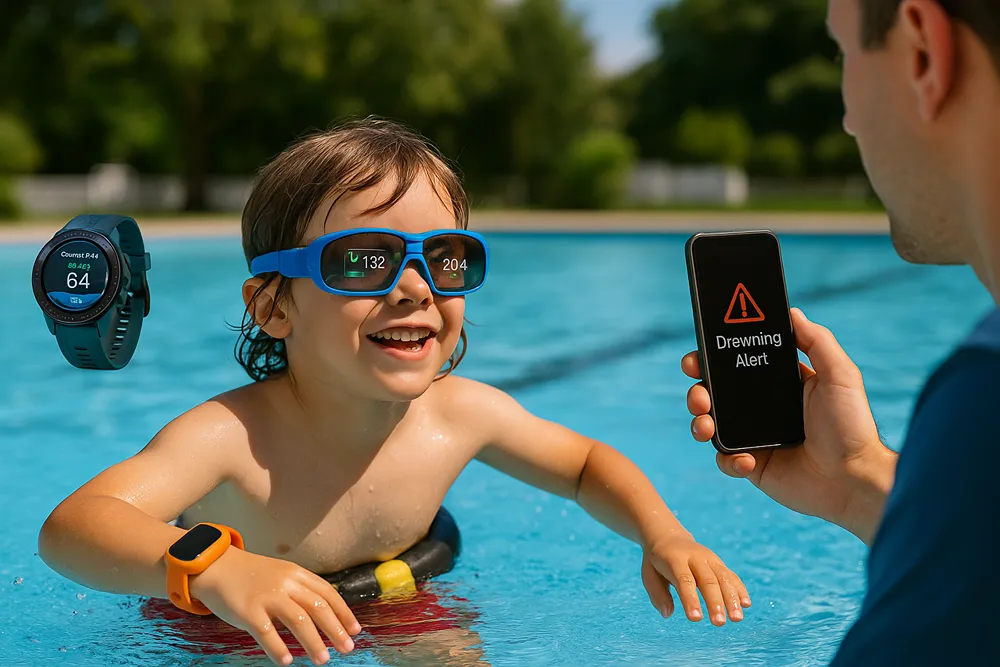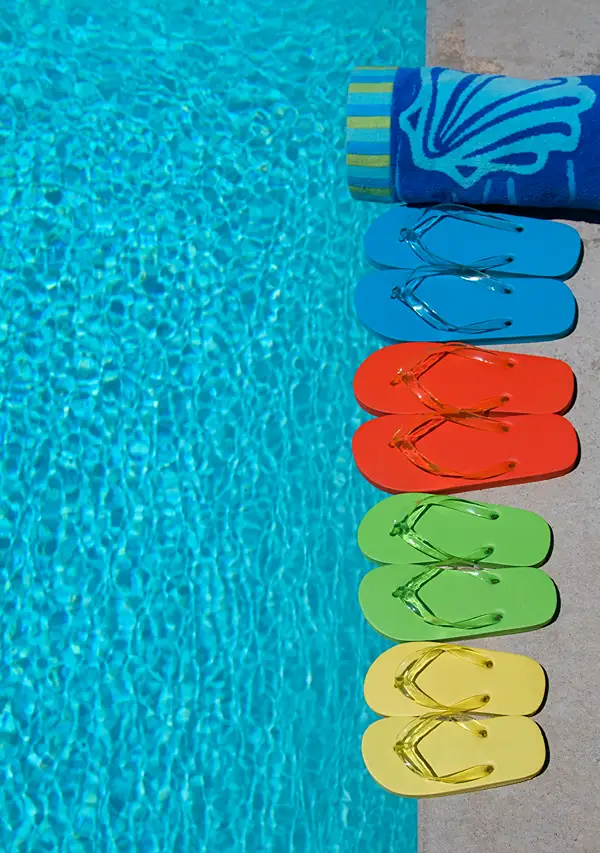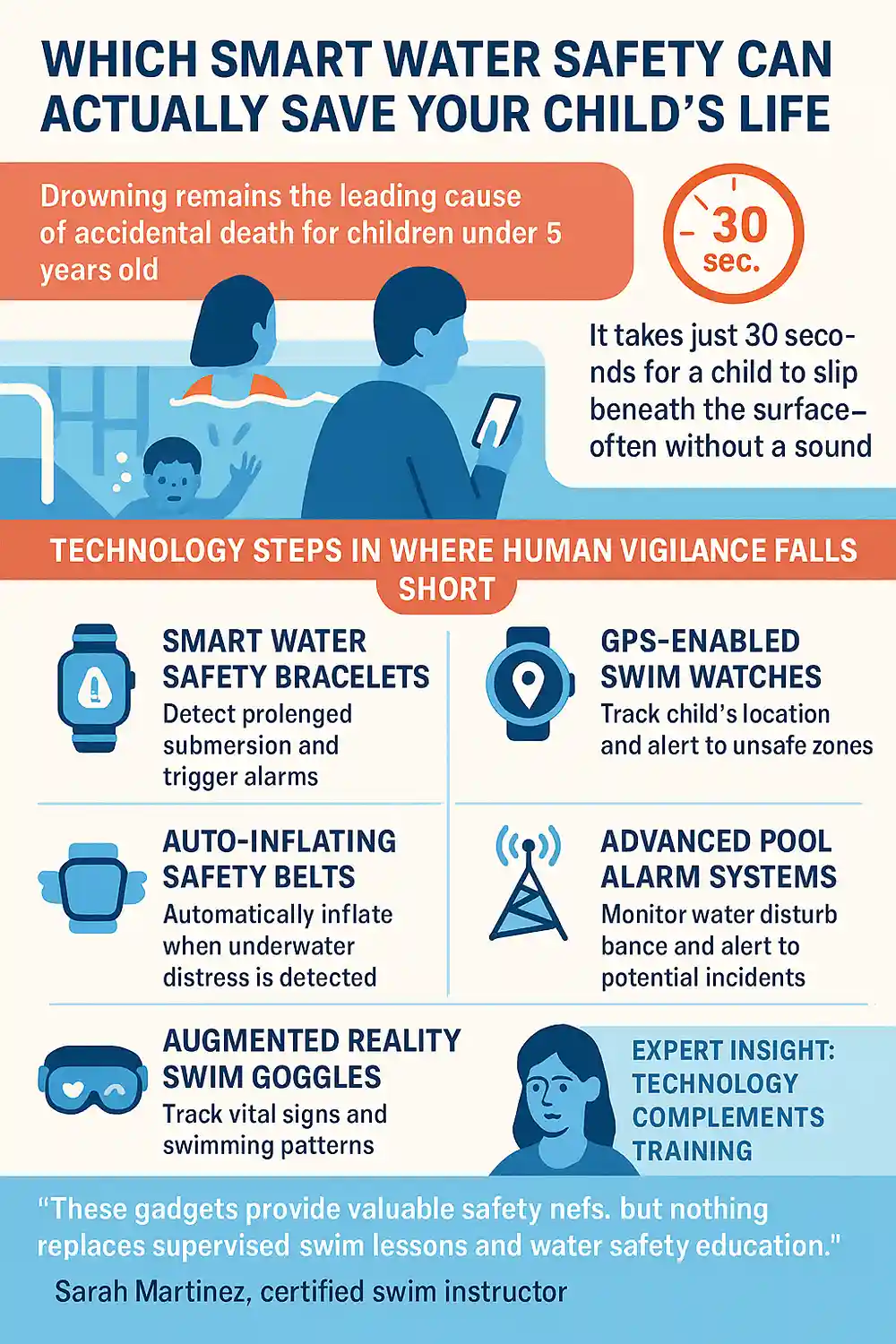Which Smart Water Safety Gadgets Can Actually Save Your Child’s Life
Drowning remains the leading cause of accidental death for children under 5 years old. Even more sobering? It takes just 30 seconds for a child to slip beneath the surface—often without a sound. For parents watching their little ones around water, that reality creates a knot of anxiety that never fully goes away.
How quickly can a fun day at the pool turn into a life-altering tragedy? Far faster than most people realize. (CDC: Drowning Facts)
When Split-Second Distractions Turn Deadly
Picture this: You’re at the community pool with your 4-year-old. They’re playing in the shallow end while you grab sunscreen from your bag. Your phone buzzes with an urgent work text. You glance down for what feels like mere seconds, but when you look up, your child has drifted toward deeper water and is struggling silently beneath the surface.
This scenario plays out more often than parents realize. Traditional safety methods have significant gaps—arm floaties create false confidence while teaching poor swimming posture, lifeguards can’t monitor every swimmer simultaneously, and even the most vigilant parents need to blink, breathe, and occasionally look away.
The harsh truth? Drowning doesn’t look like the dramatic splashing we see in movies. Children often slip under quietly, without screaming or thrashing. By the time you notice something’s wrong, precious seconds have already passed.
Technology Steps In Where Human Vigilance Falls Short
Fortunately, innovative child water safety gadgets now provide an extra layer of protection when traditional methods aren’t enough. These smart devices act as digital lifeguards, monitoring your child’s safety even when your attention is momentarily divided.
Here are five cutting-edge best swim safety tech options that could make the difference between a close call and a tragedy:
Smart Water Safety Bracelets
How it works: Devices like the SearBuddy bracelet use advanced sensors to detect when a child has been submerged beyond safe parameters. If the device remains underwater for more than 15–20 seconds, it triggers loud alarms both on the bracelet and a connected parent device.
Why parents need it: This child water safety gadget provides immediate alerts during those crucial moments when every second counts. Unlike traditional pool alarms that detect surface disturbances, these bracelets monitor your specific child’s status in real-time.
GPS-Enabled Swim Watches
How it works: Waterproof GPS watches like the Garmin Bounce track your child’s location in pools, lakes, or ocean settings. Parents receive instant notifications if their child moves beyond predetermined safe zones or enters water deeper than specified limits.
Why parents need it: Open water swimming presents unique challenges where children can quickly drift beyond safe areas. These watches ensure you know exactly where your child is, even in crowded beach or lake environments.
Auto-Inflating Safety Belts
How it works: Compact devices like the Ploota belt remain virtually invisible under swimwear until activated. When sensors detect extended submersion or distress patterns, the belt automatically inflates, bringing the child to the surface within seconds.Why parents need it: Unlike bulky life jackets that restrict movement and proper swimming technique, these belts allow natural swimming while providing emergency flotation when needed most.
Advanced Pool Alarm Systems
How it works: Modern pool alarms like the PoolGuard DAPT-2 use sophisticated wave detection technology to distinguish between normal pool activity and potential drowning incidents. The system triggers alerts when detecting irregular water displacement patterns.
Why parents need it: These systems monitor pool areas 24/7, providing protection even when children access pool areas unexpectedly. They’re particularly valuable for families with backyard pools where unsupervised access poses ongoing risks.
Augmented Reality Swim Goggles
How it works: Smart goggles like Form’s AR swim goggles don’t just track lap times—they monitor heart rate, stroke patterns, and breathing intervals. Irregular patterns trigger safety alerts to connected parent devices.
Why parents need it: For older children taking swim lessons or practicing independently, these goggles provide continuous health monitoring that can detect early signs of fatigue or distress before they become dangerous.

Expert Insight: Technology Complements Training
Sarah Martinez, a certified swim instructor with over 15 years of experience, emphasizes the importance of combining technology with proper training:
“These gadgets provide valuable safety nets, but nothing replaces supervised swim lessons and water safety education. Early exposure to water in controlled environments builds both skills and confidence that last a lifetime.”
(American Academy of Pediatrics: Drowning Prevention)
The most effective approach combines smart safety technology with comprehensive swim instruction. Join our mommy and me swim classes at our West Hills location to build water confidence together! These programs teach both parents and children how to respond effectively in water emergencies while building fundamental swimming skills.
Making the Investment in Water Safety
Child water safety gadgets typically range from $50 to $300, depending on features and functionality. While the upfront cost might seem significant, consider it an investment in your peace of mind and your child’s safety. Many parents find that having these technological safeguards allows them to feel more confident during water activities, leading to more enjoyable family experiences.
When selecting devices, look for products with:
- Quick response times (under 20 seconds for submersion alerts)
- Reliable waterproof ratings (IPX7 or higher)
- Long battery life for extended pool sessions
- Easy setup and user-friendly parent apps
Take Action Before It’s Too Late
Technology can provide the warnings you need, but teaching children proper water safety and swimming skills creates the foundation that saves lives. These gadgets work best as part of a comprehensive safety approach that includes supervision, education, and hands-on training.
Don’t wait for a close call to prioritize water safety. The combination of smart technology and proper swim instruction gives your family the protection and confidence needed to enjoy water activities safely. Every parent deserves peace of mind—and every child deserves the skills to stay safe in and around water.
For more information on water safety and drowning prevention, visit the World Health Organization: Drowning Fact Sheet.
Book a swim safety class today and give your child skills that could save their life.









